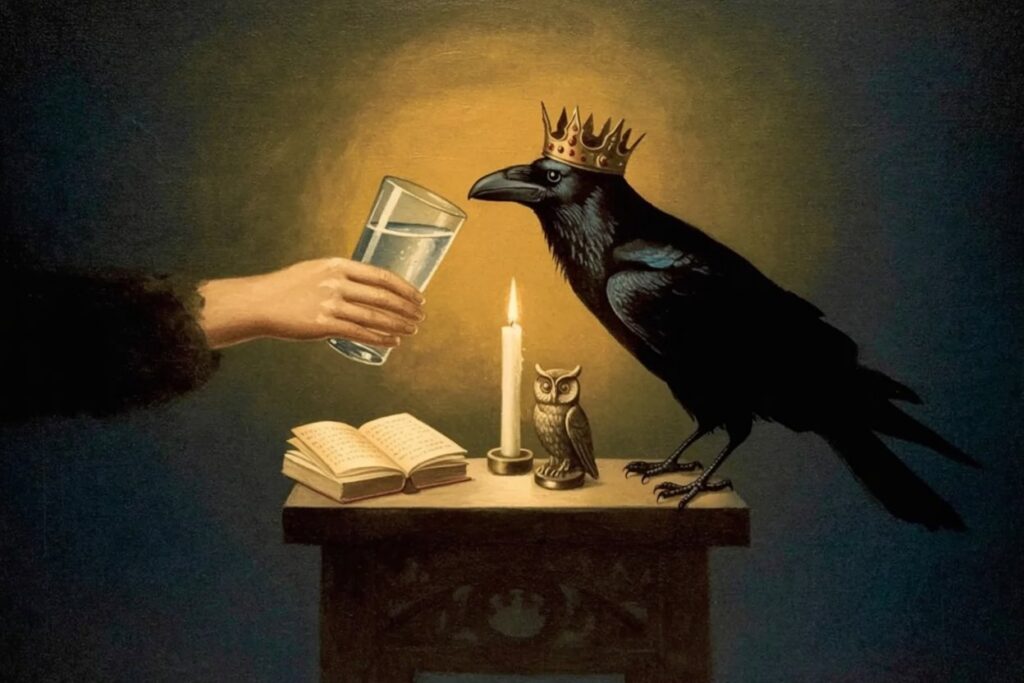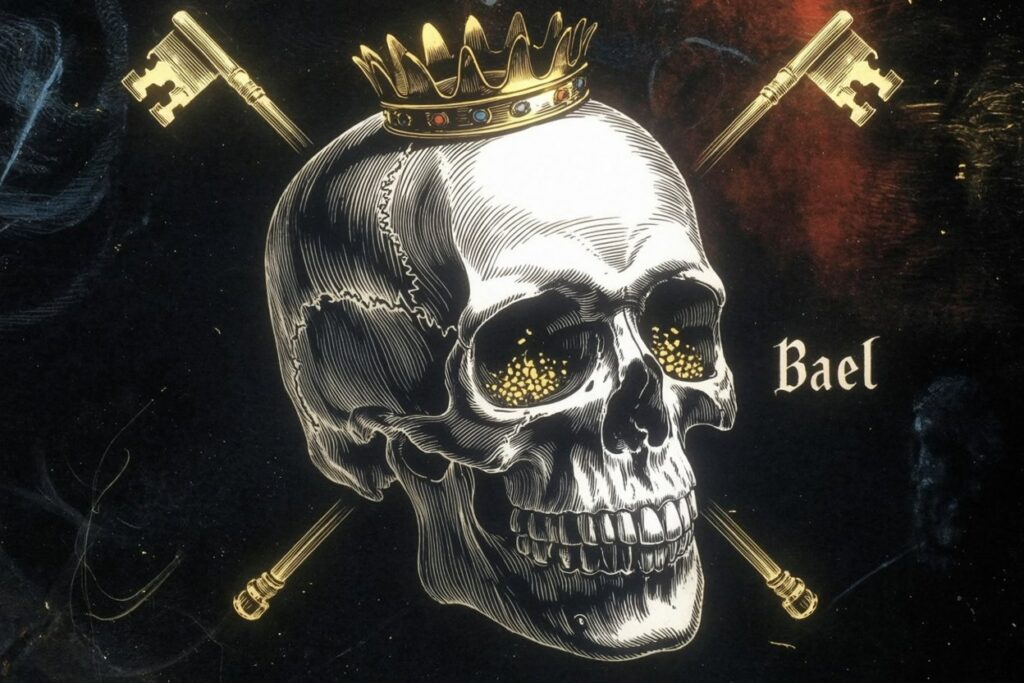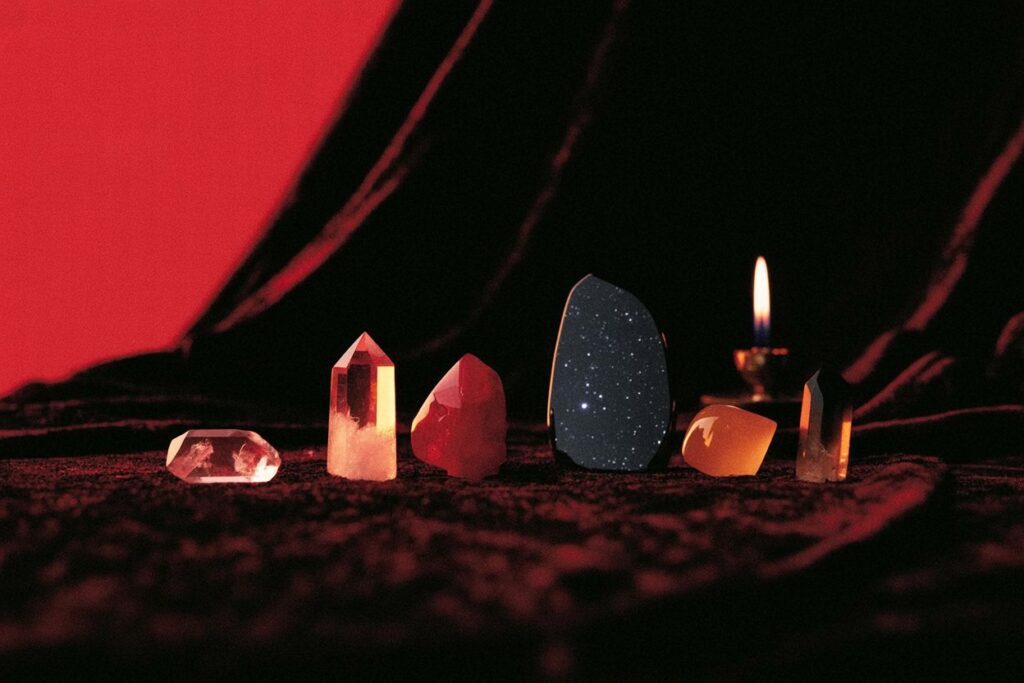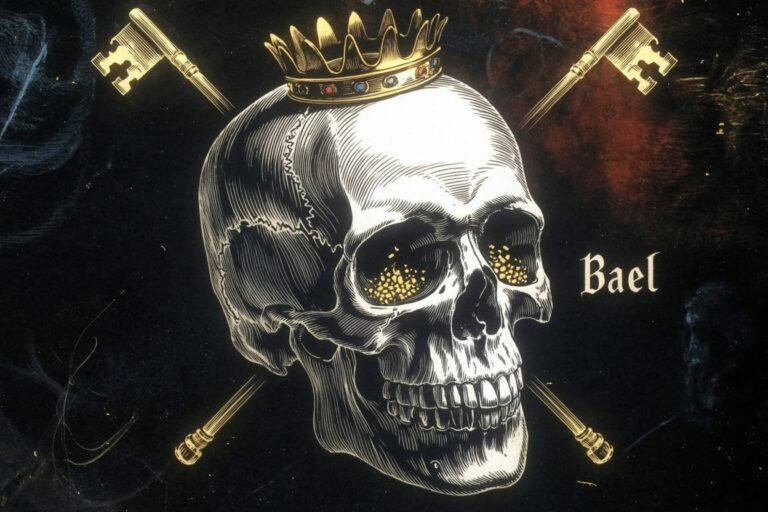Who Is The Ancient Goddess Hera?
Please note that posts on this site may contain affiliate links
The Greek goddess Hera is known as the queen of the gods and the wife of Zeus, the king of the gods and ruler of the heavens. Hera is the goddess of marriage, motherhood, fertility, protection, war, law, justice, and even the underworld. In ancient Greece, she was worshipped in many different places, showing how significant she was to the culture.
Hera’s influence stretched beyond just mythology—her role in society helped shape the ideals and values surrounding family and social structure in ancient Greek life. For example, the sanctity of marriage and the importance of fidelity were heavily influenced by Hera’s representation as the goddess of marriage. Festivals dedicated to Hera often celebrated these values, reinforcing the cultural emphasis on strong family bonds and societal stability.
The Name of Hera
The origin of Hera’s name has many theories. One idea is that her name could be related to ὥρα (hōra), meaning “season.” The philosopher Plato suggested it might come from ἐρατή (eratē), meaning “beloved,” because Zeus supposedly married her out of love instead of duty. Another historian, Plutarch, proposed that the name could be symbolic and an anagram of “aēr” (ἀήρ), which means “air.”
These different interpretations reflect how significant Hera’s name and symbolism were to ancient Greeks—each theory offering a unique perspective on her nature as a goddess of love, seasons, and life.
These meanings influenced how Hera was worshipped and perceived, with different regions emphasizing her roles in marriage, fertility, or natural cycles. For instance, in some areas, her worship focused on her role as a goddess of nature’s seasons, while in others, her power over marriage and family life was more prominent.
The importance of Hera’s name goes beyond its meaning. It represents her divine role in the natural cycle of life, where she embodies growth, prosperity, and the nurturing aspects of existence. The interpretation linking her name to “season” highlights her connection to nature’s rhythms and cycles, suggesting that her influence over fertility and motherhood is deeply tied to the natural world.
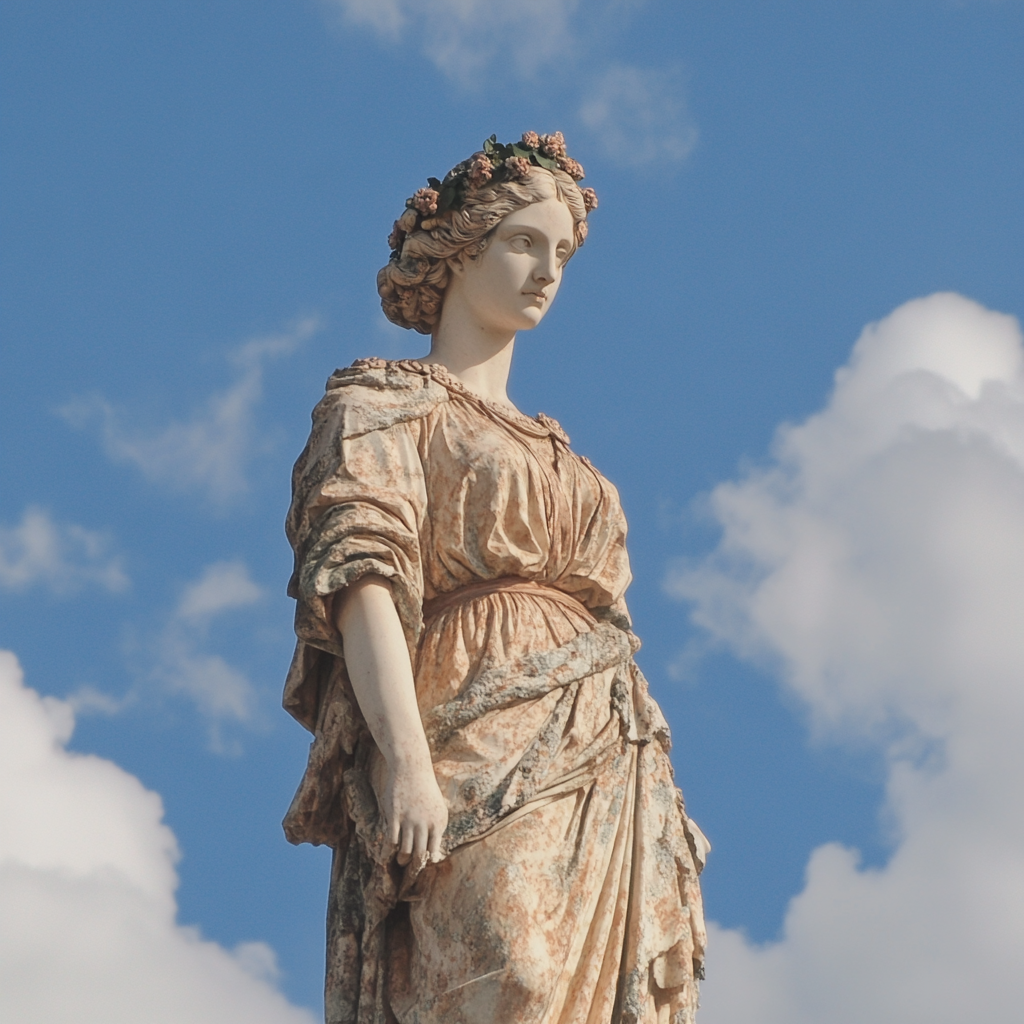
Symbols and Depictions of Hera
Hera is often depicted with a crown or wearing a wreath of oak leaves on her head. Her sacred animal is the peacock, and she is frequently shown with this bird. In fact, her chariot is pulled by peacocks, though these birds were not known to the Greeks until Alexander the Great’s conquests.
The peacock’s beautiful feathers, with their “eyes,” symbolize Hera’s watchful and all-seeing nature. The cuckoo bird is also associated with Hera, and it appears in myths where Zeus transforms into a cuckoo to win Hera’s love.
One of Hera’s oldest animal connections is to cattle. One of her epithets is Boôpis, which means “cow-eyed.” This name was meant to signify her great beauty, with large, calm eyes like those of a cow. The cow, an important symbol of fertility and nurturing, also reflects Hera’s role as a protector of mothers and families.
When portrayed alongside Zeus, Hera is often shown as a beautiful mature woman sitting on a throne. She wears a crown or bridal veil and holds a scepter topped with a pomegranate and a cuckoo, representing her power over marriage and fertility.
Hera is also depicted holding a pomegranate, a traditional symbol of fertility and abundance. In Greek culture, the pomegranate was significant because it represented the cycle of life, death, and rebirth, as well as the idea of abundance and prosperity.
This ties into Hera’s role as a fertility goddess, emphasizing her power over childbirth, family growth, and the nurturing of life. The fruit’s many seeds were seen as a symbol of fertility, further connecting Hera to the natural processes of creation and sustenance. Another symbol associated with Hera is the lily flower.
Golden apples are linked to her because the orchards of the Hesperides, which contained golden apples, were a gift to her for her wedding to Zeus. These are the same apples involved in the famous story of Eris and the apple of discord. Each of these symbols represents a different facet of Hera’s divine power: fertility, beauty, abundance, and her role in overseeing both love and conflict.
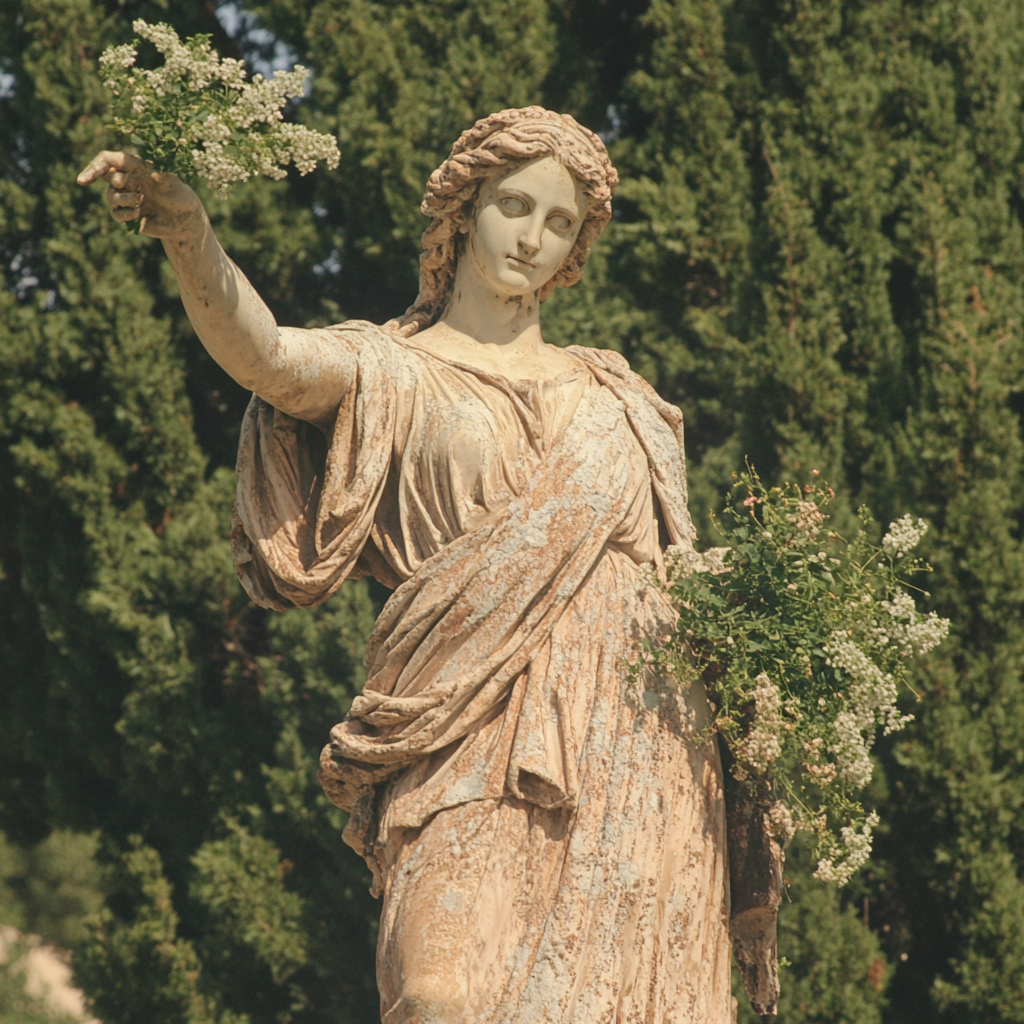
Family of Hera
Hera was born to the Titaness Rhea and the god Cronus. This means that Hera is also the sister of Zeus, her husband. Despite this complicated family connection, Hera is considered one of the most important Olympian goddesses.
Cronus, fearing that his children would overthrow him, swallowed all of them except Zeus. Zeus eventually freed his siblings, including Hera, leading to their roles as the central figures of the Olympian pantheon.
With Zeus, Hera had many children. Some of her most well-known offspring include Ares, the god of war; Hebe, the goddess of youth; Hephaestus, the craftsman god who was said to be born deformed; and several lesser-known children like Angelos, Arge, the Charites, Eileithyia (the goddess of childbirth), Eleutheria, and Enyo. Hera’s children reflect her varied roles as a goddess of war, youth, craftsmanship, and childbirth. They represent different aspects of life and society, showing how Hera’s influence extends across multiple domains.

Stories of Hera’s Wrath
Hera is known for her fierce and often cruel behavior, especially when it comes to punishing Zeus’s lovers and their children. Ancient stories often depict her as jealous and vindictive, although more modern interpretations try to show a different side of her character. For example, some recent depictions in popular culture emphasize Hera’s role as a powerful protector of families and a complex figure driven by a desire for justice rather than simple jealousy.
Her wrath was often a response to Zeus’s many affairs, highlighting her position as a guardian of marriage and fidelity. These tales provide a glimpse into the complexities of her personality—both her protective nature and her fierce sense of justice.
Hera and Leto
One famous story involving Hera’s wrath is her treatment of Leto, who was another lover of Zeus. Leto became pregnant with the twins Apollo and Artemis, and when Hera found out, she convinced all the lands to refuse Leto a place to give birth.
Eventually, Leto was able to give birth on the floating island of Delos, which was not considered part of the main earth, thanks to Poseidon’s intervention. In some versions, Hera had to be bribed with a beautiful necklace before she allowed Leto to give birth.
This story reflects Hera’s unyielding attitude toward those who threaten her position. However, Leto’s determination also underscores the importance of motherhood, a theme closely tied to Hera. Even though Hera’s actions were harsh, they show her fierce protection of her marriage and status.
Hera and Tityos
In another story, Hera attempted to harm Leto again by sending Tityos, a giant, to attack her. Tityos tried to assault Leto, but was stopped by Leto’s children, Apollo and Artemis. For his crime, Tityos was punished by being stretched out in Tartarus, where vultures ate his liver every day, only for it to grow back each night. This myth shows the extent of Hera’s anger and her willingness to go to extreme lengths to exact her revenge.
The story of Tityos also symbolizes the inevitability of divine justice. Hera, as the queen of the gods, ensured that those who crossed her faced severe consequences. The repetition of Tityos’s punishment mirrors the cycle of relentless retribution that Hera often enacted against those who wronged her, emphasizing her persistence.
Hera and Heracles
Another well-known story involving Hera is her hatred of Heracles, one of Zeus’s sons born to the mortal woman Alcmene. Hera tried to kill Heracles as a baby by sending serpents to his cradle, but the infant was strong enough to strangle the snakes.
Later in his life, Hera caused Heracles to go mad, leading him to kill his own wife and children. As a result, Heracles had to complete his famous Twelve Labors to atone for his actions, many of which were made even harder due to Hera’s interference.
The story of Heracles and Hera is one of struggle and endurance. Heracles represents the hero who must overcome immense obstacles, many of which are placed by Hera.
Her efforts to stop Heracles reveal her role as a force of adversity—testing and challenging heroes to prove their strength. Despite her antagonism, Hera’s actions indirectly shaped Heracles into the hero he became, showing her influence on both the divine and mortal realms.

The Epithets Of Hera
Hera has many epithets, being one of the most important goddesses in Greek mythology.
| Epithet | Meaning |
| Ἀλέξανδρος (Alexandros) | ‘Protector of Men’ |
| Αἰγοφάγος (Aigophágos) | ‘Goat-Eater’ |
| Ἀκραῖα (Akráia) | ‘(She) of the Heights’ |
| Ἀμμωνία | Ammonia |
| Ἄνθεια (Antheia) | Flowery |
| Ἀργεία (Argéia) | ‘(She) of Argos’ |
| Βασίλεια (Basíleia) | ‘Queen’ |
| Βουναία (Bounáia) | ‘(She) of the Mound’ |
| Βοῶπις (Boṓpis) | ‘Cow-Eyed’ ‘Cow-Faced’ |
| Λευκώλενος (Leukṓlenos) | ‘White-Armed’ |
| Παῖς (Pais) | ‘Child’ (in her role as virgin) |
| Παρθένος (Parthénos) | ‘Virgin’ |
| Τελεία (Teléia) | (as goddess of marriage) |
| Χήρη (Chḗrē) | ‘Widowed’ |
| Μονήτα (Moneta) | Used as an epithet of Hera as a patroness of coining |
| Τελχινία (Telchinia) | The Telchines were the original inhabitants of the island of Rhodes, and were said to be the first to create statues of the gods. They worshipped Hera. |
| GAME′LII (Gamêlioi theoi) | Protecting and presiding over marriage |
| HI′PPIA and HI′PPIUS (Hippia and Hippios, or Hippeios) | ‘Of horses’ |
| HYPERCHEI′RIA (Hupercheipia) | ‘The goddess who holds her protecting hand over a thing‘ |
| IMBRA′IA (Imbrasia) | Of the river Imbrasus, in Samos, where she was believed to have been born. |
| LACI′NIA (Lakinia) | Either relating to the hero Lacinius or to the gift of the Lacinian promontory given to Juno by Thetis. |
| PELASGA or PELASGIS (Pelasgis) | The Pelasgian woman or goddess. |
| PHARYGAEA (Pharngaia) | A surname of Hera, derived from the town of Pharygae, in Locris, where she had a temple. |
| SA′MIA (Samia) | Derived from her temple and worship in the island of Samos. |
| ZYGIA and ZYGIUS (Zugia and Zugios) | Surnames of Hera and Zeus as gods that preside over marriage |
| Νυμφευομενη (Nympheuomene) | Betrothed Bride |
| Αφροδιτη (Aphrodite) | Of Aphrodite |
| Ατυαρωτη (Ataurote) | Unbulled (Virginal) |
| Ολυμπια (Olympia) | Of Olympia (Elis) |
| Ἡνιοχη (Henioche) | Of the Chariot |
| Αργωια (Argoea) | Of the Ship Argo |
| Προδρομια (Prodromia) | Of the Pioneer |
These epithets reflect different aspects of her power and personality, from her nurturing side to her role as a fierce protector. They also illustrate the many ways Hera was honored and viewed by the Greeks, showcasing her influence over both public and private aspects of life. Her epithets emphasize her divine authority and her multifaceted roles, including her roles as a warrior, protector, and nurturing mother.
Worship of Hera in Ancient Greece
Hera was worshipped throughout Greece, and many temples were dedicated to her. As queen of the gods, she held a special place in the hearts of the Greeks. Temples to Hera could be found in Olympia, Corinth, Tiryns, Perachora, and on the sacred island of Delos.
However, her most famous temples were in Argos, Sparta, and Mycenae—three cities that were particularly devoted to her. These temples served as important centers for worship and were often the sites of major festivals.
At Elis, Hera was featured on coins, and sporting competitions called the Hereia were held in her honor, which were unique because only women could compete in these events. The Hereia games represented Hera’s role as a protector of women and an advocate for their rights in society.
These games were significant because they offered one of the few opportunities for women in ancient Greece to participate in athletic competitions, highlighting the respect and honor afforded to Hera and reflecting the status of women in a society that was otherwise heavily patriarchal.
Festivals celebrating marriage were also held in her name, where couples would reenact the marriage of Zeus and Hera to receive blessings for a happy life together. Such ceremonies highlighted the sacredness of marriage under Hera’s divine protection.
The worship of Hera often involved rituals meant to strengthen familial bonds and fertility. Offerings such as pomegranates, flowers, and small statuettes were given in her honor. These offerings symbolized abundance, prosperity, and the hope for a stable family life.
Hera’s temples were also sites of pilgrimage for couples seeking blessings for a fruitful marriage, and her festivals were important occasions for fostering community ties.
Hera remains one of the most complex figures in Greek mythology. Though often portrayed as vengeful and harsh, she was also a protector of marriage and an essential goddess who played a key role in maintaining order among the gods. By understanding her myths, symbols, and worship, we can better appreciate the deep and multifaceted character of Hera.
Her dual nature as both nurturing and vengeful reflects the complexities of life itself—highlighting the challenges of loyalty, love, and justice that continue to resonate even today. Hera’s story is a reminder of the power of resilience, the importance of standing up for one’s principles, and the protective strength of family and community bonds.

Discover the power and wisdom of Artemis, the ancient Greek goddess of the hunt, the moon, and wilderness. Artemis Unveiled: The Huntress and Her Mysteries is your guide to connecting with this fierce and independent deity. For just $9.99, immerse yourself in rituals, spells, and a year-long devotional plan that will help you harness the energy of Artemis and bring her strength, protection, and wisdom into your daily life.
Tips For Working With Lucifer During The Winter Solstice
Winter solstice timing makes sense for working with Lucifer when you look at what’s actually…
Stolas Altar Setup Guide: Study Desk for Goetic Teaching Work
Stolas teaches by training you to look harder. You’re studying moon phases for class and…
How to Build a Working Altar for Goetic King Bael
Bael appears in grimoires as the first king of the Goetia, ruling sixty-six legions. The…
How King Paimon Teaches Arts and Sciences Through Joy and Precision
The Ars Goetia describes the Ninth Spirit, King Paimon, arriving on a dromedary with a…
What Hecate Teaches with Seven Stones: Tourmaline, Obsidian, Moonstone, and Threshold Boundaries
You’re standing at a three-way crossroads at dusk, holding a piece of black tourmaline. The…
Lucifer Crystal Guide: Ruby, Obsidian, Citrine, and Light Bringer Stones
Lucifer gets crystals associated with Venus as the morning star, with light and illumination, and…


